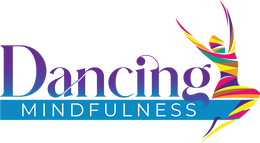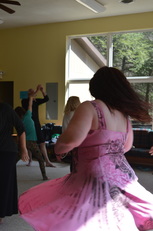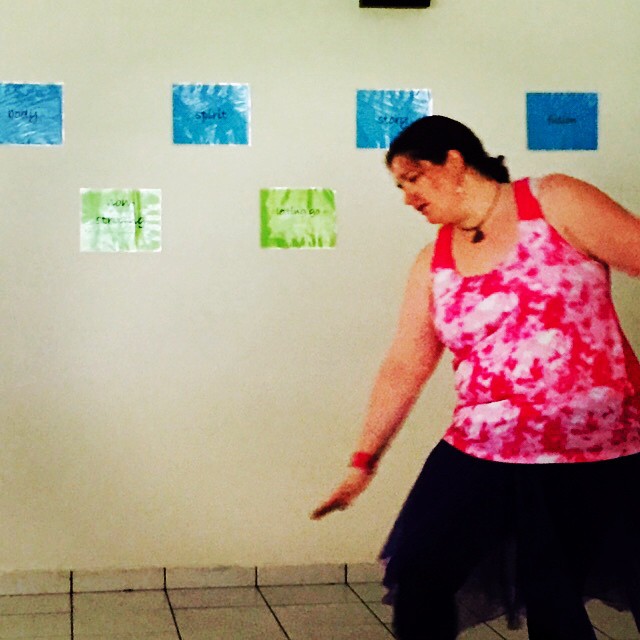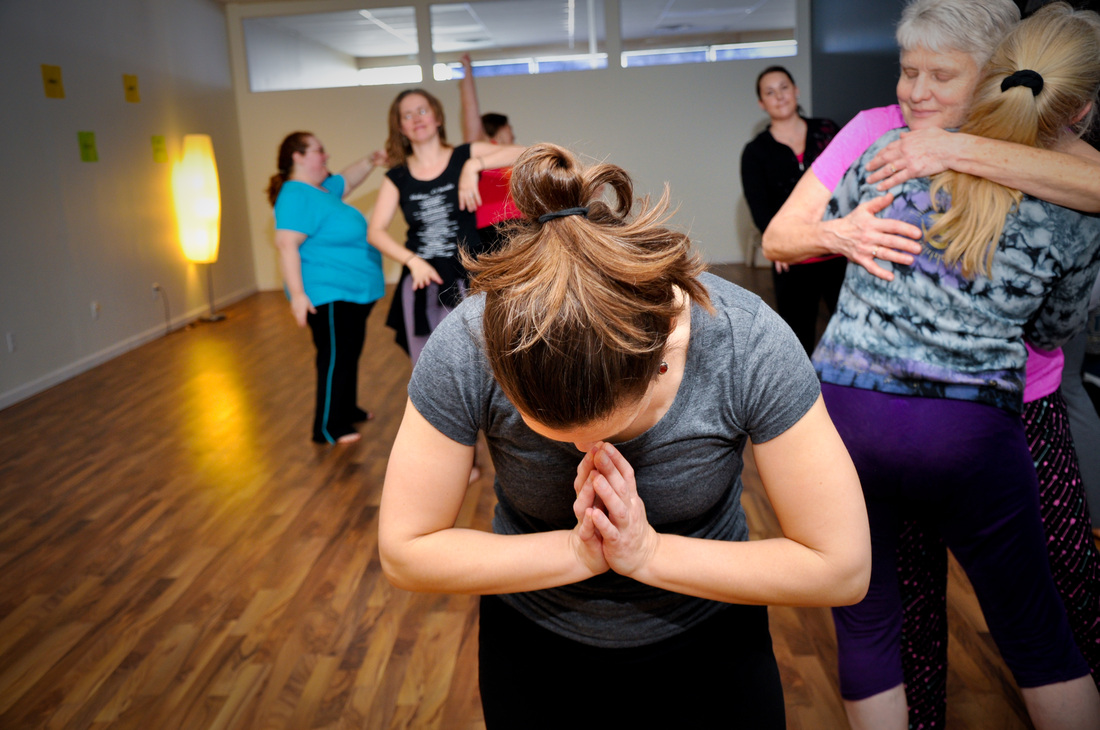|
I have this vivid memory from when I was about four years old of me laying on the grass in my backyard. My arms were spread out to the sides and my legs were slightly apart. It was summer and I had shorts and a t-shirt on. I could feel the grass on my arms and legs, could smell the flowers from the garden, and had this amazing feeling of being content and connected. I imagined in my head the world spinning and knew that I was a part of that, that everything was completely in harmony around me. The feeling in my body was light and I could feel a slight tingle. It felt almost like I was moving on a gentle wave. The entire world felt right and I knew that my place in the world was to be a part of the connection of everything. Some may call this a g-d moment while others would argue that I just had an amazing imagination.
It makes no difference to me what others think. The important part was how I felt. I have spent a lot of my life trying to recreate this feeling, but the only time I could even come close was when I was dancing. I started dance classes at age seven, going on eight. By this point, the world had tainted my feelings of pure content and connectedness. I was watching my godmother die of breast cancer, beginning to really understand the term "being bullied," and had an overwhelming sense of being horribly different from my classmates. In spite of my troubles, I quickly learned I LOVED dancing more than I ever thought. From the time I could walk I knew that life was better with a little saunter in my step. Joining a dance class and being surrounded by others laughing and dancing was pure joy for me. The only thing missing was that feeling of connectedness that I just couldn’t seem to grasp again. Fast forward a decade. I was now a well-versed mental health client, full-fledged self-injurer, and budding alcoholic/addict. Dance class still brought amazing joy to my life, but was no longer enough to break through the darkness that took over my life when I left the studio. I threw myself into theatre at school, and that helped, but my overall joyous outlook on life was gone. I was living a double life- out as a lesbian at school and straight at home, the "perfect" CCD student in church and devout pagan with friends, and happy at dance and drama club, but miserable the rest of the time. Leaving high school, I knew I would probably never live to see my 30th birthday. I spent years searching for the answer. I came out of the closet fully, I moved across country (and then back), I tried new religions, and I got married. All the while still dealing with depression, self-injury, and avoidance-based substance abuse. After a particularly bad time in my life, I decided that I would do anything to find myself and be happy. On a whim, I signed up for a retreat in Pennsylvania. Living in New Jersey I thought, "how far could it be?" Six hours on the road, and several stops at beloved convenience store, later and I found just how far Pennsylvania goes. I did quite poorly in geography and so I found out the hard way that it borders Ohio. That first night of the retreat I rekindled my love for dance, which had gone by the wayside for years. The first experience of Dancing Mindfulness I had was powerful. I had tears in my eyes as the opening dance session came to a close. I knew I had found something I needed. Within the three days of the retreat I made closer friend connections than I had ever experienced before and spent hours deep in conversation with Lexie, a woman who I now fondly call my twin. Somehow between Lexie and Jamie (founder of Dancing Mindfulness and co-leader of that retreat), I left the retreat with plans to be trained as a Dancing Mindfulness facilitator. I didn't have my BA (I had been working on it for 10 years at this point) yet and didn't consider myself a valid part of the mental health world, regardless of my years of work in the field. I couldn't understand how anyone would think I was capable of facilitating such a deep practice. Facilitator training changed my life. I came out of it with a deep passion for a part of the practice known as Dance Chapel. It's a non-facilitated practice and the way I experienced it during that training brought me back to my youth, when dancing and laying in the grass brought me comfort. The world was blocked out and it was just me and the music. I didn't realize it then, but I was beginning to feel that universal connection again. I took the concept of Dance Chapel and ran with it. At first I attempted to start a community class and offer a public Dance Chapel once a month. When my small following began to dwindle and the relationship between the studio hosting me and I ended, I turned to my private Dancing Mindfulness practice. I found solace in making playlists for myself and playing with what songs fit where. I woke up at 4.30 am during the summer and drove to the shore to dance my playlists as the sun came up. I played music and danced everywhere. Finally I began to feel that comfort that I had felt as a four year old laying in the grass. This feeling continued to grow as my relationships with those in my Dancing Mindfulness family deepened. I learned to accept support and love. When I finally realized I was abusing substances, my Dancing Mindfulness family was there to support and help me through the process. I learned to dance through withdrawal, hard emotions, pain, and success. I have danced into sobriety, out of my marriage, and into the unknown. Mindfulness is now a part of my life; I am aware of what I am doing in every moment instead of distracting myself from reality. My body, my mind, my soul, and my image of Spirit are all now connected by the power of being able to connect to my emotions through dance and movement. It has been almost three years since my first experience of Dancing Mindfulness at that fateful retreat. I dance every day in whatever way I can. Sometimes I set aside time to dance a full playlist and sometimes I just dance around wherever I am (home, car, store, et cetera). I have found myself again. With the help of Dancing Mindfulness, and the family I have found in this community, I have celebrated my 30th birthday, found sobriety, and created a life I am excited to live.
2 Comments
Originally published on StartAgain Media
“It’s better to be a first-rate version of yourself than a second-rate version of someone else.” -Judy Garland Several of my friends and colleagues have active sitting meditation practices in either Buddhist traditions or the more secular spin-offs like mindfulness-based stress reduction (MBSR). When I hear them gush over the spiritual fruits of their chosen meditation practices and how such practices change their lives, I could get an inferiority complex or shame myself for resisting such discipline. Notice, I said could. Today, I chose not to. In recovery, I’ve learned that becoming something I’m not, even if there is the hope of some spiritual promise at the end, is not authentic (and incidentally enough, not very spiritual). Everything about me always longed for spiritual, not religious, connection, so being raised in two pretty rigidly religious churches came with its challenges (Dad was Evangelical, Mom was Protestant). In my rebellion after leaving their home, I sampled just about every spiritual/religious practice out there that resonated even slightly with my values. At one point I became a devout Catholic myself (engaging in many silent contemplative practices within Catholicism). Vipassana meditation and mindfulness entered my life through several clinical channels, and as a result, I pursued studying some of these traditions in their own right. At one point, I briefly worked with a Buddhist teacher. For many years, I’ve taught my clinical clients how to meditate and how to use mindfulness-informed interventions for wellness. To say that my spiritual identify is an “amalgamation” is the understatement of the year. Through my spiritual evolution, I have learned that sitting for hours on a cushion, contemplating contemplations, going on silent retreats, chanting repetitively, and thoroughly scanning my body parts while laying down is not how I achieve the spiritual harmony that I seek. Although I will engage in these practices when it seems genuine for me to do so, and I have nothing but respect for people who engage in these practices authentically, I’ll be frank—they don’t get me to that state of balance that I seek. Dancing, however, does. “But dancing isn’t meditation!” If you hold such protestations, it’s okay. I’ve heard them before. I am used to people with more traditional practices turning their noses up at me, and I have fielded my share of snide comments. I’ve heard people say things like, “Dancing Mindfulness is great, but as a way of carrying mindfulness into the world.” Although Dancing Mindfulness is a way to carry mindfulness into the world, for me, Dancing Mindfulness is so much more than that. Dancing is the crux of my mindfulness practice, just as sitting on a cushion for hours coming back to the moment with your head may be your foundation. And guess what? I’ve found that engaging in vigorous dance meditation allows me to come back to seated meditation with much more meaning, just as some people may need to engage in a vigorous asana yoga practice before they can deeply relax and quiet the mind. One of the criticisms that I’ve heard about Dancing Mindfulness, at least the incarnation of it that I’ve developed and teach is that the practice is too noisy, too lyrical. That we can dance mindfully to Madonna or Eminem as easily as we can to Kirtan or devotional chant offends many, yet it is genius to many. For me, it makes perfect sense to dance to high-energy music from a variety of genres in a meditative way where, if I catch my present-moment awareness wandering and judgment creeping in, I gently draw my attention back. Interestingly, I notice that the more I engage in this practice, the more comfortable I am with silence in my daily life. As a clinical counselor, silence is a skill that I have to use in my sessions with people. Allowing for silent spaces in the practice of therapy is when real change happens. I've found as an educator and lecturer that pacing and navigating the spaces between words and pauses is a skill vital to effectiveness. At a talk this past week, an attendee came up to me and said, “Thank you for your pacing. Thanks for not being afraid of silence.” I just about burst into tears when she shared this because of some criticisms I’ve faced about Dancing Mindfulness being “expressive” and not allowing for enough quiet. Yet it’s always made total sense to me that the more expressive and creative that I can be with my meditation practice, the more comfortable I become with quietness and stillness in my life and in my counseling/training vocation. I’ve found it comforting to learn that I am not alone in my experiences. Dr. Christine Caldwell (2014), director of the somatic psychology program at Naropa University in Boulder, CO recently coined a term called bodyfulness. Bodyfulness is achieved in practices like yoga, somatic experiencing, Qi Gong, dance, and other practices that add another dimension to the practice of mindfulness by more fully encouraging awareness of the body. Caldwell identifies what she terms anti-somatic bias in more traditional mindfulness practices, and saw a need for this new term. Reading that she too had experienced such bias was incredibly validating. I achieve mindful awareness and its fruits by engaging my body and letting it creatively flow. This truth clicked for me over several stays at one of our country’s popular yoga and health centers several years ago when I first discovered the genre of conscious dance. The discovery of conscious dance was one of the great gifts of my life. From those powerful retreats, I formally crafted and named Dancing Mindfulness as a legitimate mindfulness practice. Some people feel that with Dancing Mindfulness, I am pushing the boundaries of what constitutes mindfulness. I disagree with this assessment. The way I practice mindfulness simply cannot be confined by the traditional boundaries that several ancient schools of thought and more systematized secular programs like MBSR establish. For me, there are infinite combinations of ways to meditate and achieve mindfulness. Even Jon Kabat-Zinn, founder of MBSR, writes: “Meditation is any activity that helps us systematically regulate our attention and energy, thereby influencing and possibly transforming the quality of experience in service of realizing the full range of our humanity and of our relationship to others in the world (2003; 2011).” He and many other modern-day mindfulness scholars routinely teach that any human activity can be engaged in mindfully, whether that be yoga, walking, jogging, chopping wood, carrying water, or doing the laundry. Dance is not so frequently mentioned in these comments of “everything can be practiced mindfully.” Maybe I shouldn’t be surprised, considering that Western society, in the face of many liberal evolutions in value, still seems to be more emotionally, creatively, and sensually repressed than ever. I could go on and on with my feelings on this, but I don’t want to seem that I am forcing dance meditation on you, any more than I want you to force sitting meditation on me. There are so many paths home. Why limit ourselves to one? Why judge others if the path that resonates the best for them doesn’t meet your conceptualization of what mindfulness and meditation should be? Holly Rivera, one of our Dancing Mindfulness facilitators, has engaged in many traditional Buddhist practices for the last decade and continues to be involved with Buddhist spiritual communities. She recently shared a beautiful reflection that helped me to answer my own questions: I have definitely found that Dancing Mindfulness has helped my meditation practice. I can focus a lot better and find it easier to quiet my mind. I think that once you can learn to bring yourself back to the now regardless of surrounding, it makes it that much easier to focus when you don't have to work so hard to stay present. Every person is different and benefits differently from mindfulness. I find it unfair to judge one form of mindfulness "better" than another. This just leads to categorizing people as "good" or "bad" based on the way they are able to be mindful. Sounds a lot like when we would teach only memorization in school and called kids who were auditory or visual learners "stupid." In researching the experiences of Asian woman (both nuns and laywomen), Buddhist teacher Martine Batchelor (2013) concluded that the specific techniques of meditation used do not seem to matter as much as one’s sincerity in pursuing the Dharma. May we all move forward honoring each other’s sincerity in their chosen practice(s). REFERENCES Batchelor, M. (2013). Meditation and mindfulness. In J. M. G. Williams & J. Kabat-Zinn (Eds.), Mindfulness: Diverse perspectives on its meaning, origins, and applications (pp. 157-164). New York: Routledge/Taylor Francis. Bhikku, B. (2011). What does mindfulness really mean? A canonical perspective. Contemporary Buddhism, 12(1), 19-39. Caldwell, C. (2014). Mindfulness and bodyfulness: A new paradigm. The Journal of Contemplative Inquiry, 1(1), 77-96. Kabat-Zinn, J. (2003). Mindfulness-based interventions in context: Past, present, and future. Clinical Psychology: Science and Practice, 10(2), 144-156. Kabat-Zinn, J. (2011). Mindfulness for beginners: Reclaiming the present moment-and your life. Boulder, CO: Sounds True Books. |
Dr. Jamie MarichCurator of the Dancing Mindfulness expressive arts blog: a celebration of mindfully-inspired, multi-modal creativity Archives
September 2022
Categories
All
|
Contact |
Memberships & Affiliations |
|
Please direct all inquiries to:
[email protected] © Mindful Ohio & The Institute for Creative Mindfulness, 2021 Terms of Use Privacy Policy |
Dancing Mindfulness/The Institute for Creative Mindfulness is an organizational member of the International Association of Expressive Arts Therapists, the Dance First Association, and NALGAP: The Association of Gay, Lesbian, Bisexual, Transgender, Addiction Professionals and Their Allies; Dancing Mindfulness proudly partners with The Breathe Network and Y12SR: The Yoga of 12-Step Recovery in our shared missions.
|




 RSS Feed
RSS Feed